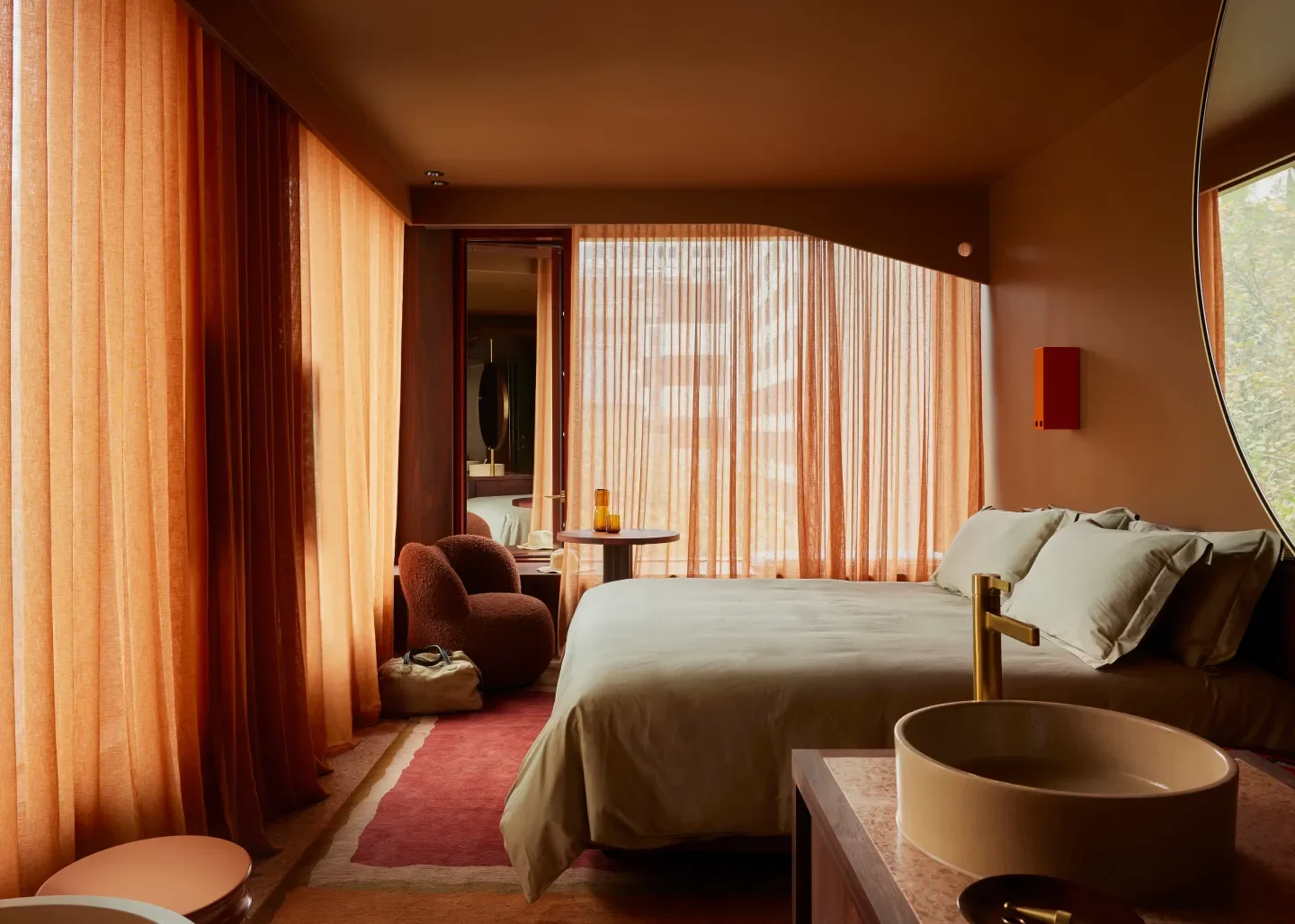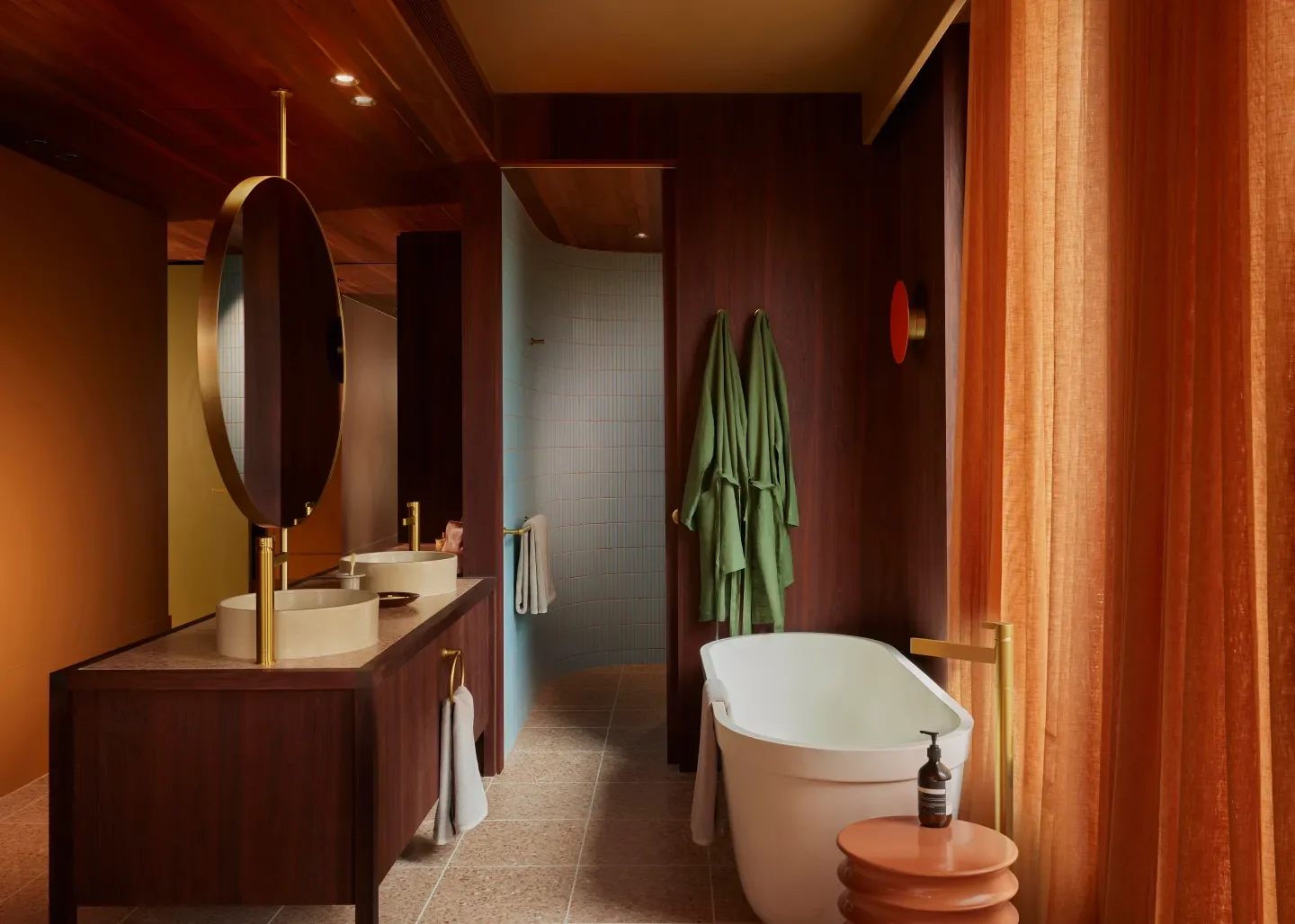As I Explore...The Melbourne Place
As I Explore… #01 Design stories from my walks, visits, and quiet pauses…The Melbourne Place
A few months back, I had a chance to stay at Melbourne Place Hotel—and it’s been sitting in my photo library ever since. I’ve been meaning to share it, because the experience stayed with me.
It honestly felt like stepping into a still frame of a film. The kind where every detail is composed, but nothing screams for attention. Recently added to the Ennismore portfolio, the hotel is designed by Kennedy Nolan—and it’s a study in cohesion and restraint. The lobby set the tone. A bold digital art screen played curated visuals—each one bold, intentional, and thought through. One frame in particular somehow stayed with me.
The reception desk—draped in leather-look fabric with a rustic metal frame—wasn’t trying to impress. It was just there. Present. Grounded. Soft drapes were used throughout to gently offset the monolithic walls—a beautiful gesture that added warmth and flow. That balance continued throughout. Nothing was loud. Everything was considered.
MidAir, the rooftop restaurant was another standout. Nothing flashy—just bold colours, sculptural furniture, and a quiet confidence in how it all came together. The view of Melbourne framed through two round cut-outs in the monolithic brick walls felt intentional—almost like the space was watching the city. It was playful, but grounded. Beautifully done.
Even before I started working in hospitality design, I remember often wondering—every time I visited a hotel—where certain things came from. A chair I loved, a fabric I found comforting, a light that made the room feel right. I’d try to search for it later, because something about it stayed with me. And I always thought—what if that information was just shared? Wouldn’t that deepen the experience?
Now, having worked on the other side, I know how much care and intention goes into those choices. So when I see a hotel that openly shares the story behind its design—it feels meaningful. A softly lit bedside screen later shared the story behind the design—the makers, the artists, the brands—all locally sourced.
It didn’t just inform. It built trust. It sparked curiosity.
As someone who’s worked behind the scenes for years, I know how rarely those stories reach the guest. When they do, it feels like a quiet act of respect—and belief. A belief that the guest deserves to know the care behind what they’re experiencing. A belief that design is not just about what’s seen—but who’s behind it, and why it was made that way. It shows the hotel isn’t afraid of being copied.
It’s focused on connection—connection that comes from authenticity. And that’s powerful.
Because when guests know where things come from, they don’t just admire the space. They feel invited in. They see possibility. They take a step closer to imagining their own dream space.
That is rare hospitality in a unique way.
That day, I didn’t feel like exploring the city. I stayed in. The bar, the restaurant, the calm corners—each held something. The hotel wasn’t just a place to sleep. It became the experience. In the rooms, visual depth was created through layering—but always within the same tonal and textural family. Oiled jarrah timber, dusty pink terrazzo, matte-painted walls, and aged brass details came together in a palette that felt grounded and calm. There was warmth, contrast, and richness—yet nothing felt busy or overdone. What looked simple and clean clearly took a lot of care. The layering, the restraint, the trust in material and tone — it all came together in a way that made the space feel easy to be in, and hard to forget.
It was a great reminder of what thoughtful design can do — not loudly, but with quiet clarity.











